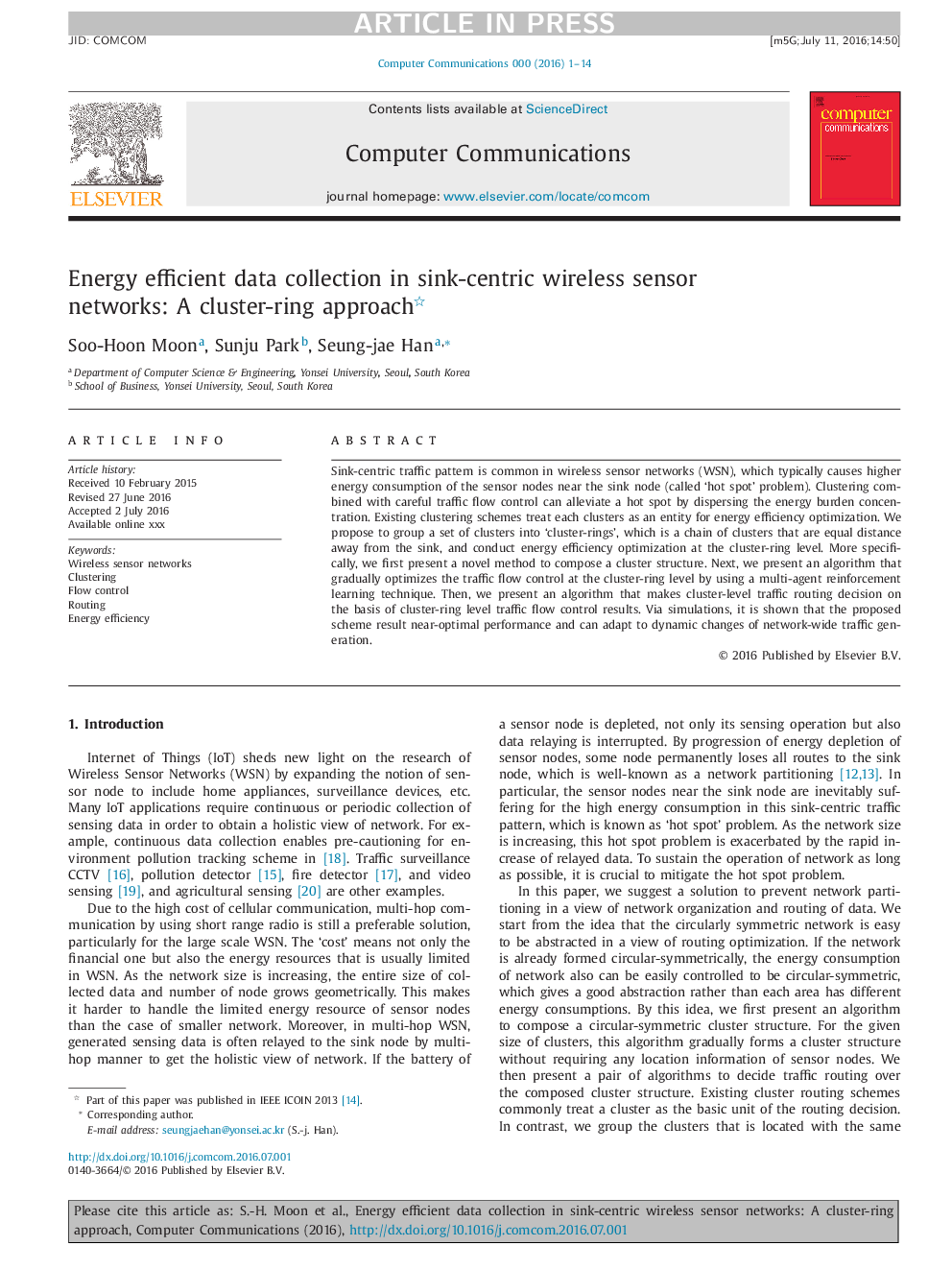| Article ID | Journal | Published Year | Pages | File Type |
|---|---|---|---|---|
| 4954437 | Computer Communications | 2017 | 14 Pages |
Abstract
Sink-centric traffic pattern is common in wireless sensor networks (WSN), which typically causes higher energy consumption of the sensor nodes near the sink node (called 'hot spot' problem). Clustering combined with careful traffic flow control can alleviate a hot spot by dispersing the energy burden concentration. Existing clustering schemes treat each clusters as an entity for energy efficiency optimization. We propose to group a set of clusters into 'cluster-rings', which is a chain of clusters that are equal distance away from the sink, and conduct energy efficiency optimization at the cluster-ring level. More specifically, we first present a novel method to compose a cluster structure. Next, we present an algorithm that gradually optimizes the traffic flow control at the cluster-ring level by using a multi-agent reinforcement learning technique. Then, we present an algorithm that makes cluster-level traffic routing decision on the basis of cluster-ring level traffic flow control results. Via simulations, it is shown that the proposed scheme result near-optimal performance and can adapt to dynamic changes of network-wide traffic generation.
Related Topics
Physical Sciences and Engineering
Computer Science
Computer Networks and Communications
Authors
Soo-Hoon Moon, Sunju Park, Seung-jae Han,
